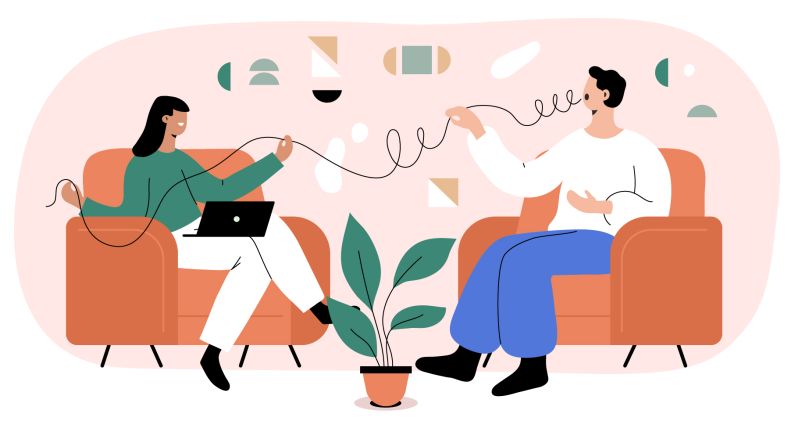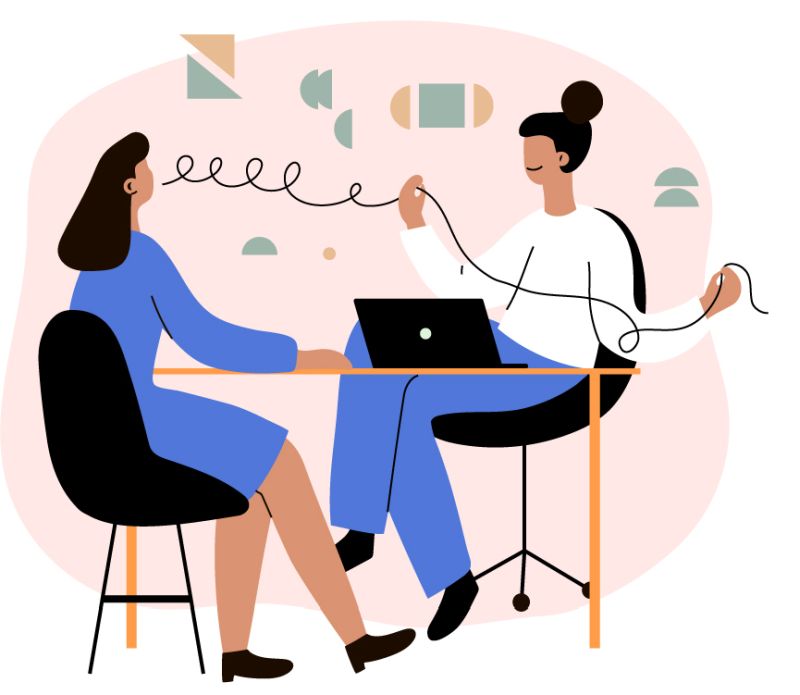THIS POST INCLUDES:
1. The Foundations of Supervision
2. Developing Ethical Practice from Supervision
3. Support Through Supervision
4. Free Download Role of Supervision Summary
THE FOUNDATIONS OF SUPERVISION

Supervision is an integral component that fortifies the foundation of professional competence and ethical adherence. Supervision is rooted in the principles of mentorship and collaborative learning. It provides a structured framework for art therapists to engage in reflective dialogue, receive constructive feedback, and continually refine their skills. The supervisory relationship is a partnership, where the supervisor’s experience merges with the therapist’s evolving expertise.
Art therapists venturing into private practice can encounter a myriad of challenges including ethical dilemmas, complex client cases, and the need for continuous skill refinement. Supervision serves as a navigational compass, guiding therapists through the intricacies of the professional landscape. Supervision can offer insights, strategies, and a reservoir of collective wisdom garnered from the supervisor’s experience.
Competence and confidence are integral to the success of any art therapy practice. Through supervision, therapists have the opportunity to dissect their sessions, explore alternative interventions, and receive validation for their successes. This iterative process fosters a sense of competence and bolsters the therapist’s confidence in their unique approach to art therapy.
COMPONENTS OF SUPERVISION
Regular Sessions
Supervision sessions are where therapists engage in in-depth discussions about their caseload, ethical considerations, and professional challenges. These sessions may include case presentations, analysis of therapeutic techniques, and collaborative problem-solving for professional issues and the affect it can have on a therapist personally.
In the beginning stages of being an art therapist, relying on supervision is a natural progression from studying where the learner therapist relies on the developed wisdom of teachers, advisors, and supervisors. However, as careers progress, art therapists can find themselves becoming increasing isolated from other therapists when their time is consumed with the mechanics of day to day activities. It can be natural to start cancelling supervision appointments with the promise of catching up soon.
Therapists should be mindful that regular supervision sessions will ultimately benefit their ability to navigate the constant pressures of becoming a busy art therapist and all that entails in a professional and personal life.
Constructive Feedback
Constructive feedback is the cornerstone of supervision as it provides a pathway to improvement. Supervisors draw from their wealth of experience and provide nuanced feedback that empowers therapists to refine their interventions, hone their observational skills, and navigate the complexities of the therapeutic relationship.
Professional challenges are inevitable in private practice as a therapist. Whether it be navigating complex client dynamics, adapting interventions to diverse populations, or addressing personal reactions to client narratives, supervision serves as a crucible for professional growth.
These challenges can become catalysts for resilience and innovation. Through collaborative problem-solving, therapists glean insights from the collective wisdom of the supervisory relationship. Supervisors can draw from their experience and guide therapists in transforming challenges into opportunities for refinement.
Professional Identity Development
Supervision plays a pivotal role in the cultivation of a therapist’s professional identity. It is within this collaborative space that therapists reflect on their theoretical orientation, ethical stance, and the integration of art into their therapeutic framework. The supervisor acts as a guide and can aid in the crystallization of the therapist’s unique professional identity.
DEVELOPING ETHICAL PRACTICE FROM SUPERVISION
Ethical Decision-Making
The ethical considerations in art therapy are nuanced and often context-dependent. Supervision acts as a sounding board for ethical decision-making. Therapists can present ethical dilemmas encountered in their practice, and through dialogue, supervisors assist in navigating these complexities while upholding the highest ethical standards.
Ethical considerations will often form a pivotal component of supervision session and help the therapist develop important skills that ensure the principles of integrity and client well-being remain central to treatment.
Supervision provides a reflective space for ethical discourse and allows therapists to confront dilemmas, evaluate decision-making processes, and fortify their commitment to ethical art therapy practices. Through this ethical lens, supervision cultivates a professional environment where the therapist can develop a framework to parse all future ethical considerations through in order to safely navigate potential issues.
Maintaining Client Welfare
Art therapists bear the responsibility of safeguarding the welfare of their clients. Supervision ensures that therapists remain vigilant to potential ethical pitfalls, maintain appropriate boundaries, and consistently prioritize the well-being of those they serve. This commitment to ethical practice is foundational for building trust within the community.
Maintaining appropriate boundaries is an integral aspect of client welfare in art therapy. Supervision provides therapists with a reflective space to scrutinize the nuances of boundary dynamics within the therapeutic relationship. This includes exploring the intersection of personal and professional boundaries, acknowledging the impact of power differentials, and navigating the complexities inherent in the art therapy process.
Adherence to professional standards is integral to professional practice. Through supervision, therapists cultivate a commitment to ongoing education, cultural competence, and the ethical framework that underpins their practice.
SUPPORT THROUGH SUPERVISION

Through shared experiences and collective problem-solving, supervision can help contribute to the growth of art therapists who may find themselves working in a relatively solo environment.
Supervision can also extends beyond immediate problem-solving by assisting in the formulation of long-term professional development plans. Therapists, in consultation with their supervisors, can delineate goals, skill-building strategies, and avenues for continued learning. This forward-looking approach ensures sustained growth.
Supervision acts as a reservoir of collective knowledge where experiences, insights, and innovative approaches are shared. This communal sharing enhances the professional competence of art therapists.
Below is an outline of some action steps that can be incorporated into supervision sessions:
- Establish Regular Supervision Meetings: Create a consistent schedule for supervision meetings. This routine provides a sense of structure and ensures that therapists have a dedicated space for professional dialogue and support.
- Utilize Virtual Platforms: Leverage virtual platforms for supervision, especially for therapists in remote or isolated settings. Video conferencing tools enable meaningful connections, breaking down geographical barriers and fostering a sense of community.
- Encourage Reflective Journaling: Incorporate reflective journaling as a practice within supervision. Art therapists can document their professional journey, challenges faced, and insights gained. This not only serves as a personal tool for growth but also becomes valuable material for supervision discussions.
- Create Knowledge-Sharing Platforms: Establish platforms within supervision for the sharing of resources, research findings, and relevant articles. This exchange contributes to a dynamic knowledge base that benefits all therapists involved.
- Structured Case Presentations: During supervision sessions, art therapists can present their challenging cases. This provides an avenue for in-depth analysis as the art therapist identifies key issues and also allows therapists to benefit from the collective wisdom of the supervisor.
- Encourage Specialized Focus Groups: Form specialized focus groups within supervision based on shared interests or areas of expertise. These smaller groups allow for in-depth exploration of specific topics, fostering a deeper understanding among participants.
Supervision serves not only as a safeguard for ethical practice and client welfare but also as a robust support system for the professional growth and well-being of art therapists. By nurturing a collaborative learning environment, mitigating professional isolation, and building a collective knowledge base, supervision becomes an integral component in the continuous development of art therapy practitioners.
FREE DOWNLOAD: Art Therapy Exercise
SIGN UP below to gain access to our RESOURCE LIBRARY and download the FREE Supervision Tips

BUILD YOUR ART THERAPY REFERENCE MATERIALS:
Pin this image to your Pinterest board.

SHARE KNOWLEDGE & PASS IT ON:
If you’ve enjoyed this post, please share it on Facebook, Twitter, Pinterest. Thank you!

